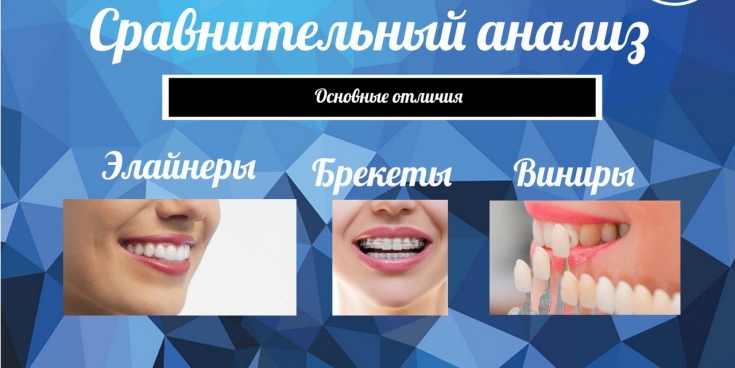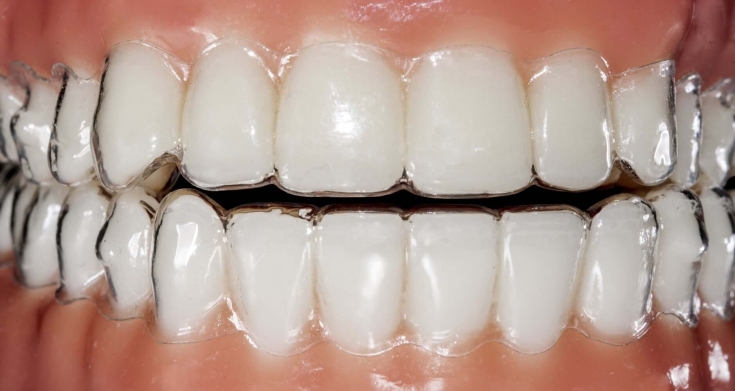Bite correction — the required procedure. According to statistics, at least half of the world's population has orthodontic problems. In & nbsp; 37% of cases, alignment of the dentition is required. This is necessary not only for aesthetic reasons, but and to evenly distribute the load on all areas of the jaws, to prevent premature abrasion of individual teeth. The variety of orthodontic designs is great. Let's figure out if mouthguards are effective for straightening teeth and what they are.
- What are Teeth Alignment Mouthguards
- Main indications and contraindications for use of aligners
- Pros and cons of teeth alignment trays
- Types of aligners and features of each of them
- The main thing alignment of the dentition
What are teeth straightening trays
To align the dentition, different types of constructions are used — braces, caps, veneers. Each correction technique has its advantages and disadvantages, so when choosing, you should trust the experience of an orthodontist. Teeth alignment caps (they are also called aligners) are colorless caps made of high-strength hypoallergenic materials — biosilicon or bioplastic.
Follow us on Instagram
Aligners have appeared relatively recently, but are already very popular. The secret of success is simple: the designs are easy to use, align teeth carefully, without discomfort. Often they are installed after correcting the bite with braces to fix the effect. Mouthguards are almost invisible when smiling, do not damage the soft tissues of the oral cavity, but are only suitable for cases where only minor correction of the dentition is needed.

Mouthguards for teeth alignment are put on all day or at night, removed before meals and hygiene procedures. The patient himself performs these procedures. When one design wears out, it is replaced with a new one (every 1.5-3 months). The required number of aligners is calculated by the orthodontist. The patient immediately receives the entire set — 2-30 caps, depending on the estimated period of correction.
Main indications and contraindications for use of aligners
Indications for application of caps:
-
Allergy to metal. In these cases, some types of braces cannot be installed.
-
Crowding of teeth. Aligners are placed if the defect is slightly expressed.
-
The gap between the teeth. It can also be covered with veneers, but this is expensive.
-
Tooth displacement. Mouthguards are installed if the tooth is rotated relative to its axis, pushed forward, backward or sideways relative to the dentition.
-
Fixing the result after bite correction. Mouthguards are used in courses of combined correction.
Orthodontists do not recommend aligners if the patient has tartar, jaw abnormalities, impacted teeth, or severe disease. First you need to solve these problems, and then deal with the issue of bite correction.
Read also: Tooth cleaning stone: what methods do dentists use
Pros and cons of teeth alignment trays
Among the main benefits of aligners, the following are most often mentioned:
-
Comfort. Mouthguards do not spoil diction, do disturb and do not create any inconvenience.
-
Invisibility. Surrounding people can only notice caps from close range, and and only when looking closely. Therefore, designs can be recommended to people for whom the aesthetic side of the issue is very important.
-
Safety. Aligners are safe. They do not damage tooth enamel, do not make it difficult to clean teeth, so there is no risk of caries or decalcification.
-
Easy to wear. After installing the cap, there will be no special restrictions. The patient can eat any food and brush his teeth with familiar tools.

Perfect designs don't exist, so aligners have their drawbacks. Chief among — high price. Caps are more expensive than braces, plus you have to pay for 3D modeling of individual designs. However, the increased comfort of the correction procedure more than pays for the costs. The remaining disadvantages are related to the lack of responsibility of patients who forget to put on or take off their aligners on time.
Read also: Why you need dental floss: rules of use
Types of aligners and features of each of them
Capas differ in several parameters:
-
According manufacturing method. Individual aligners are available. They are made separately for each patient using 3D modeling technology. These are expensive, but very effective designs. There are also thermoplastic caps. They are "faceless" and take the desired shape after being heated in hot water and installed on teeth. These aligners are cheaper.
-
According material.Basic materials for making caps — silicone and bioplastic. In their properties, they almost do not differ;
According to specifics of use. There are round-the-clock and night guards. The former are used if a serious correction of the dentition is required. The latter are suitable for people who have minor bite defects or need to fix the effect after wearing braces.
By age. Adult and children's mouthguards differ only in size. Otherwise they are identical. Children and adolescents often have problems with wearing mouthguards. Designs are easy to put on and take off. This is an advantage, but children often use it irresponsibly: they ignore the need for bite correction, so they remove it for any reason. Parental controls are important here.

Read also: The gap between the teeth: what what she says
The main thing caps for alignment of the dentitionThe bite can be corrected and it is necessary at any age, so that complexes do not appear due to an ugly smile. If there are no serious defects, aligners are fine:
Mouthguards are discreet and comfortable.You don don't have to hide your smile or buy special tools to clean orthodontic appliances.
- This is an advantage for adults, but can be a disadvantage for children. If you choose mouthguards for your child, control the bite correction process.
- Check with doctor. He will help you choose the designs that according to your budget.
- All mouth guards are safe, comfortable and hypoallergenic. To struggle with choice — silicone or bioplastic — you don't have to.
Many stars and public people wear aligners, but you can notice them if the faces on the screen are shown close-up. It in everyday life: no nobody will notice that you correct the dentition if you don don't want it.
Read also:
The best toothpaste: there is the difference between an expensive and cheap productYou might be interested in: How to place a filling.






Add a comment